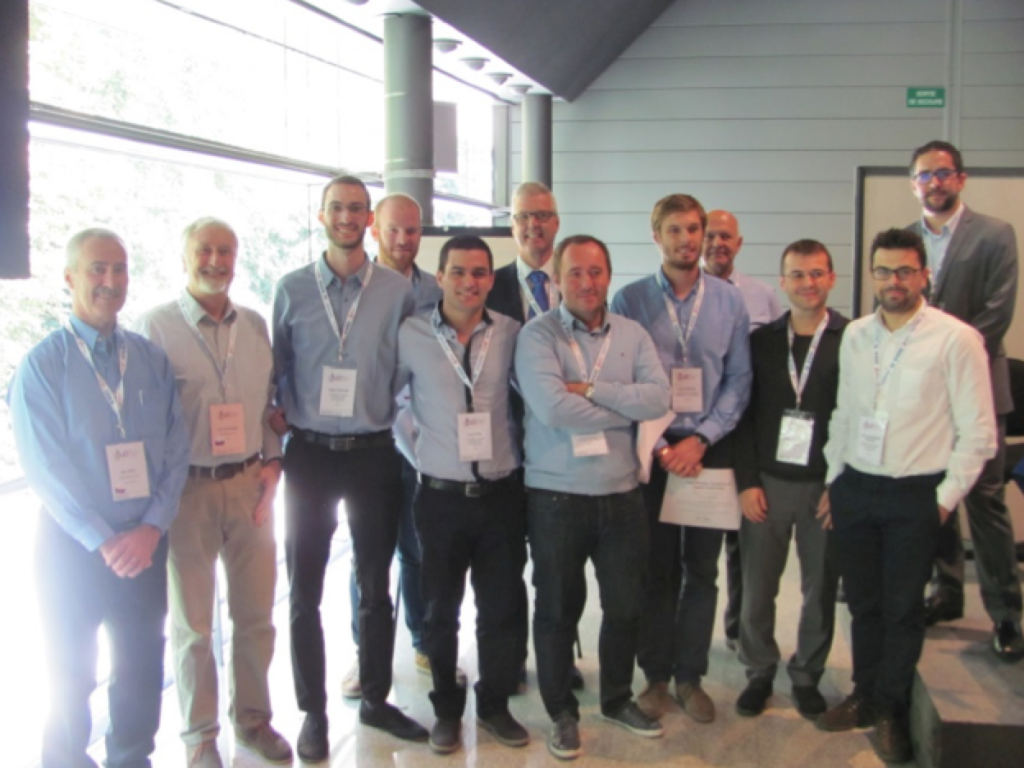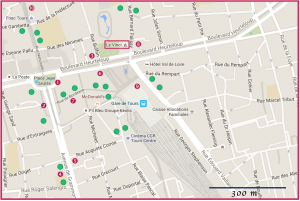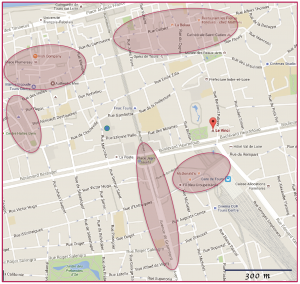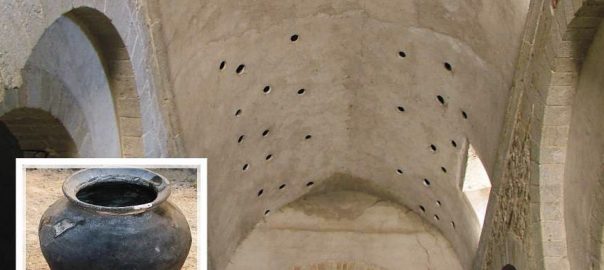| PA-1 The effect of ultrafast imaging on shear wave observations |
| Annette Caenen1, Mathieu Pernot2, Darya Shcherbakova1, Ingvild Kinn Ekroll3, Patrick Segers1, Abigail Swillens1 |
| 1IBiTech – bioMMeda, Department of Electronics and Information systems, Ghent University, Ghent, Belgium, 2Institut Langevin, Ecole Supérieure de Physique et de Chimie Industrielles, CNRS UMR 7587, INSERM U979, Paris, France, 3Circulation and Medical Imaging, Norwegian University of Science and Technology, Trondheim, Norway |
| PA-2 Quantitative MR-guided transient shear wave imaging for tissue elasticity assessment |
| Yu Liu1, Jingfei Liu1, Brett Fite1, Josquin Foiret1, Kent Leach1, Katherine Ferrara1 |
| 1Biomedical Engineering, UC Davis, Davis, California, USA |
| PA-3 Multiplane wave imaging for ultrafast ultrasound imaging at higher signal-to-noise ratio |
| Elodie Tiran1, Thomas Deffieux1, Mafalda Correia1, David Maresca1, Bruno-Felix Osmanski1, Lim-Anna Sieu2, Antoine Bergel2, Ivan Cohen2, Mathieu Pernot1, Mickael Tanter1 |
| 1Institut Langevin, ESPCI-ParisTech, PSL University, CNRS UMR7587, INSERM U979, Paris, France, 2Neuroscience Paris Seine, University Pierre et Marie Curie, UMCR 18, INSERM U1130, CNRS UMR8246, France |
| PA-4 Intracardiac myocardial elastrography for lesion quantification in cardiac radiofrequency ablation |
| Ethan Bunting1, Clement Papadacci1, Elaine Wan2, Julien Grondin1, Elisa Konofagou1,3 |
| 1Department of Biomedical Engineering, Columbia University, New York, New York, USA, 2Division of Cardiology, Columbia University, New York, New YOrk, USA, 3Department of Radiology, Columbia University, New York, New York, USA |
| PA-5 Single red blood cell oxygen saturation imaging using multispectral photoacoustic microscopy |
| Michael Moore1,2, Patrick Schygulla3, Eric Strohm1,2, Michael Kolios1,2 |
| 1Ryerson University, Toronto, Canada, 2Keenan Research Centre for Biomedical Science, St. Michael’s Hospital, Toronto, Canada,3Heidelberg University, Germany |
| PA-6 A Smartphone-based Portable Ultrasound System for Point-of-Care Diagnosis |
| Woojin Jung1, Pilsu Kim1, Minsuk Park1, Sua Bae1, Youngbae Lee1, Sangbum Kye2, Tai-kyong Song1 |
| 1Electronic Engineering, Sogang University, Korea, Republic of,2HANSONO Co.,Ltd., Korea, Republic of |
| PA-7 Focused ultrasound hyperthermia mediated drug delivery using thermosensitive liposomes and visualized with in vivo two-photon microscopy |
| Marc Santos1,2, Kullervo Hynynen1,2, David Goertz1,2 |
| 1Sunnybrook Research Institute, Toronto, Ontario, Canada, 2Medical Biophysics, University of Toronto, Toronto, Ontario, Canada |
| PA-8 Controlled ultrasound-mediated blood-brain barrier opening using passive acoustic mapping of subharmonic microbubble activity |
| Ryan Jones1,2, Meaghan O’Reilly1,2, Lulu Deng1, Kogee Leung1, Kullervo Hynynen1,3 |
| 1Physical Sciences Platform, Sunnybrook Research Institute, Toronto, Ontario, Canada, 2Medical Biophysics, University of Toronto, Toronto, Ontario, Canada, 3Medical Biophysics and Institute for Biomaterials and Biomedical Engineering, University of Toronto, Toronto, Ontario, Canada |
| PA-9 High Temperature Static Strain Microwave Acoustic Sensor |
| Anin Maskay1,2, Mauricio Pereira da Cunha1,2 |
| 1Electrical and Computer Engineering, University of Maine, Orono, ME, USA, 2Laboratory for Surface Science and Technology, University of Maine, Orono, ME, USA |
| PA-10 Speeding up SAFT 3D processing by greedy sparse deconvolution |
| Jan Kirchhof1, Fabian Krieg1,2, Florian Römer1, Alexander Ihlow1, Ahmad Osman2, Giovanni del Galdo1 |
| 1Institute for Information Technology, Technische Universität Ilmenau, Ilmenau, Germany, 2Department of Component Inspections, Fraunhofer Institute for Nondestructive Testing IZFP, Saarbrücken, Germany |
| PA-11 Ultrasonic imaging in highly attenuating materials with Walsh-Hadamard codes and the decomposition of the time reversal operator |
| Eduardo Lopez Villaverde1, Sebastien Robert1, Claire Prada2 |
| 1CEA, LIST, Gif-sur-Yvette, France, 2Institut Langevin, Paris, France |
| PA-12 Differential optical interferometer for measuring transient SAW generated with ultra-wideband IDT |
| ANURUPA SHAW1, Damien Teyssieux1, Vincent Laude1 |
| 1Institut FEMTO-ST, UMR CNRS 6174, Université Bourgogne Franche-Comté, Besançon, France |
| PA-13 Evidence of a large band gap in a phononic strip |
| Etienne Coffy1, Sébastien Euphrasie1, Pascal Vairac1, Abdelkrim Khelif1 |
| 1MN2S, FEMTO-ST, Besançon, France |
| PA-14 Acoustic nonlinearity as a mechanism for liquid drop explosions in drop-chain fountains generated by a focused ultrasound beam |
| Elena Annenkova1, Wayne Kreider2, Julianna Simon2, Oleg Sapozhnikov1,2 |
| 1Department of Acoustics, Physics Faculty, Moscow State University, Moscow, Russian Federation, 2Center for Industrial and Medical Ultrasound, Applied Physics Laboratory, University of Washington, Seattle, WA, USA |
| PA-15 Direct shadowgraphic observation of needle hydrophone-field interaction at 10 million frames per second |
| Kristoffer Johansen1, Jae Hee Song2, Paul Prentice1 |
| 1CavLab, Cluster of Ultrasound Science, Technology and Engineering Research, University of Glasgow, Glasgow, United Kingdom, 2Division of Imaging and Technology, Ninewells Hospital, University of Dundee, United Kingdom |
| PA-16 Modeling Nonlinear Behavior of RF Bulk Acoustic Wave Resonators |
| Vikrant Chauhan1, Markus Mayer2, Christian Huck2, Herbert Zidek2, Robert Weigel1, Amelie Hagelauer1, Maximilian Pitschi2 |
| 1Institute of electronics engineering, Erlangen Nuremberg University, Erlangen, Germany, 2Advanced Development, TDK Corporation, Munich, Germany |
| PA-17 Rayleigh SAW assisted SH-SAW immunosensor on X-cut 148-Y LiTaO<sub>3</sub> |
| Takashi Kogai1,2, Hiromi Yatsuda1, Jun Kondoh2 |
| 1Japan Radio Co., Ltd., Japan, 2Shizuoka University, Japan |
| PA-18 Nonlinear BAW Filter Effects on the Performance of an LTE Receiver |
| Victor Silva Cortes1, Vikrant Chauhan1, Robert Weigel1, Georg Fischer1, Amelie Hagelauer1 |
| 1Institute of Electronics Engineering, University Erlangen-Nuremberg, Germany |
| PA-19 High-temperature SAW electrodes based on Ir-Rh thin films |
| Amine TAGUETT1, Thierry AUBERT1,2, Marc Lomello1, Omar Elmazria3, Jaafar Ghanbaja3, Abdelkrim Talbi4 |
| 1Laboratoire SYMME, Université de Savoie, Annecy-le-Vieux, France, 2Laboratoire LMOPS, CentraleSupélec – Université de Lorraine, Metz, France, 3Institut Jean Lamour (IJL), UMR 7198 CNRS-Université de Lorraine, Vandoeuvre-lès-Nancy, France, 4LIA LEMAC/LICS – IEMN, EC Lille-CNRS, Lille, France |
| PA-20 A MEMS T/R switch embedded in CMUT structure for ultrasound imaging frontends |
| Xiao Zhang1, Arooba Zeshan2, Oluwafemi Adelegan1, F. Yalcin Yamaner2, Omer Oralkan1 |
| 1Department of Electrical and Computer Engineering, North Carolina State University, Raleigh, NC, USA, 2School of Engineering and Natural Sciences, Istanbul Medipol University, Beykoz, Istanbul, Turkey |
| PA-21 Real-Time Imaging, Targeting, and Ablation of Ex-Vivo Tissue Using a Handheld Histotripsy Transducer and Coregistered 64-Element High-Frequency Endoscopic Phased Array |
| Jeffrey Woodacre1, Thomas Landry1, Jeremy Brown1 |
| 1Biomedical Engineering, Dalhousie University, Halifax, Nova Scotia, Canada |
| PA-22 Laser-Generated-Focused Ultrasound Transducers for Microbubble-Mediated, Dual-Excitation Sonothrombolysis |
| Jinwook Kim1, Brooks D. Lindsey2, Wei-Yi Chang1, Xuming Dai3, Joseph M. Stavas4, Paul A. Dayton2, Xiaoning Jiang1 |
| 1Mechanical and Aerospace Engineering, North Carolina State University, Raleigh, North Carolina, USA, 2Joint Department of Biomedical Engineering, University of North Carolina at Chapel Hill and North Carolina State University, Chapel Hill, North Carolina, USA, 3Division of Cardiology, University of North Carolina at Chapel Hill, Chapel Hill, North Carolina, USA, 4Division of Vascular and Interventional Radiology, University of North Carolina at Chapel Hill, Chapel Hill, North Carolina, USA |
| PA-23 High Frequency Integrated Transceiver System-on-a-Chip for CMUT based IVUS on a Guidewire |
| Jaemyung Lim1, Coskun Tekes2, F. Levent Degertekin3, Maysam Ghovanloo4 |
| 1School of Electrical and Computer Engineering, Georgia Institute of Technology, Atlanta, Georgia, USA, 2G.W. Woodruff School of Mechanical Engineering, Georgia Institute of Technlolgy, USA,3G.W. Woodruff School of Mechanical Engineering, Georgia Institute of Technology, USA, 4School of Electrical and Computer Engineering, Georgia Institute of Technology, USA |
|








